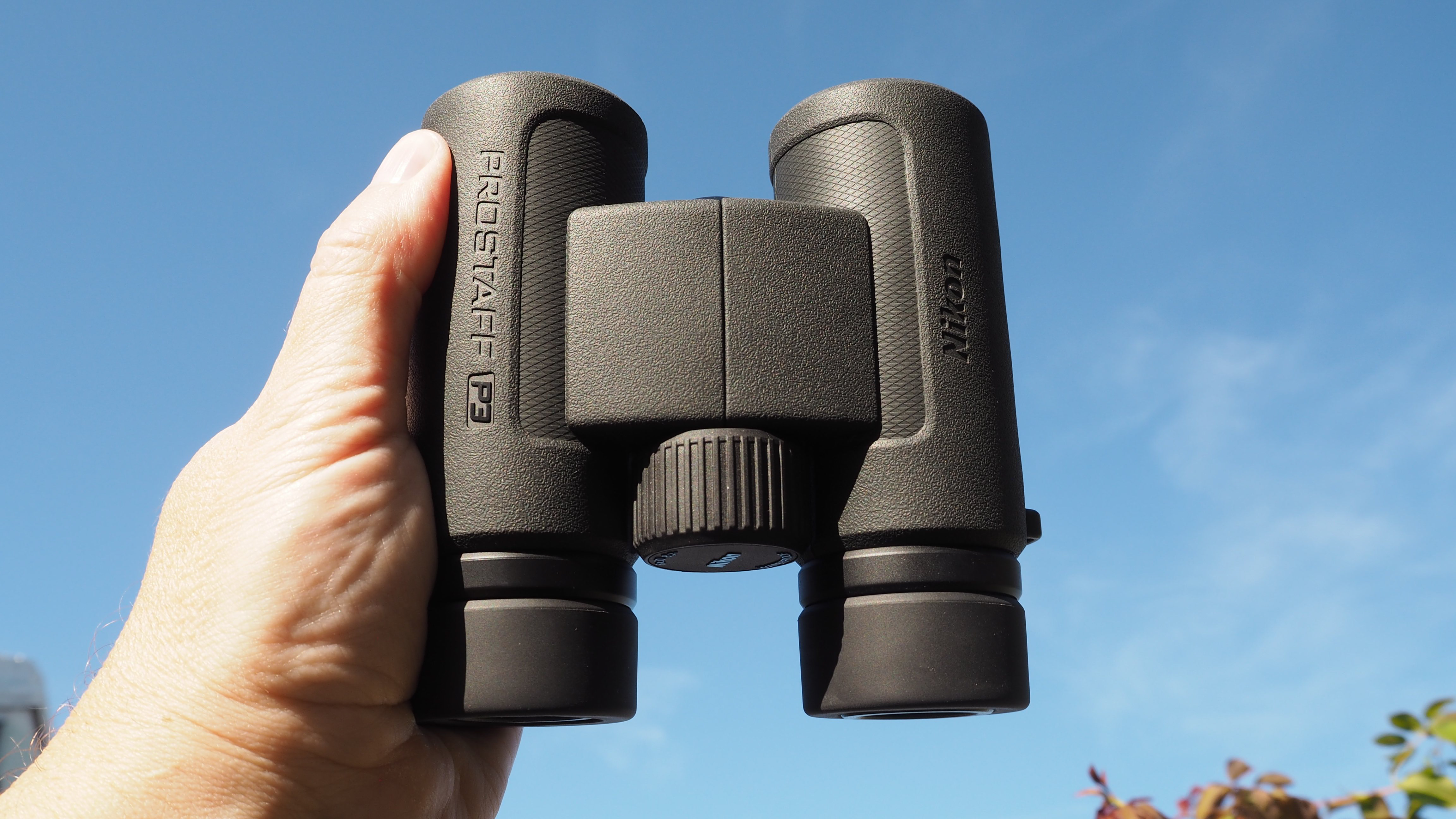
A specialist in optics, Nikon has quite the comprehensive line up when it comes to binoculars. The Prostaff range from Nikon, an example from which we’re rating here, sits in the middle between its sporty, lightweight and simple-to-use Aculon series and its premium-end Monarch branded flagship offerings.
The Prostaff brand therefore is all about offering a decent performance at a good price. Suitable uses include birding, sports and events, camping and hiking, as well as obviously travel.
There are a lot of different though similarly specified options in the Prostaff range, which can get confusing. As well as the P3 8x30 model we’re looking at there, there is a higher magnification and larger lens 10x42 model, should we need it for potentially even better light gathering. Alternatively, if we don’t want to go that far but could still do with a larger objective lens to continue observing our visual quarry into the hours of dusk, there’s also the Nikon Prostaff P3 8x42, or even a 10x30 model. In short this manufacturer has most bases covered.
Having provided that degree of context, let’s take a look at how the Nikon Prostaff P3 8x30 binocular – the entry-level device in its particular range – handles…

Specifications
Magnification: 8x
Objective lens diameter: 30mm
Field of view at 1000m: 152 metres
Closest focusing distance: 2.5 metres
Eye relief: 15.4mm
Weight: 475g
Dimensions: 125x130x52mm, 4.9x5.1x2.0 inches
Key features
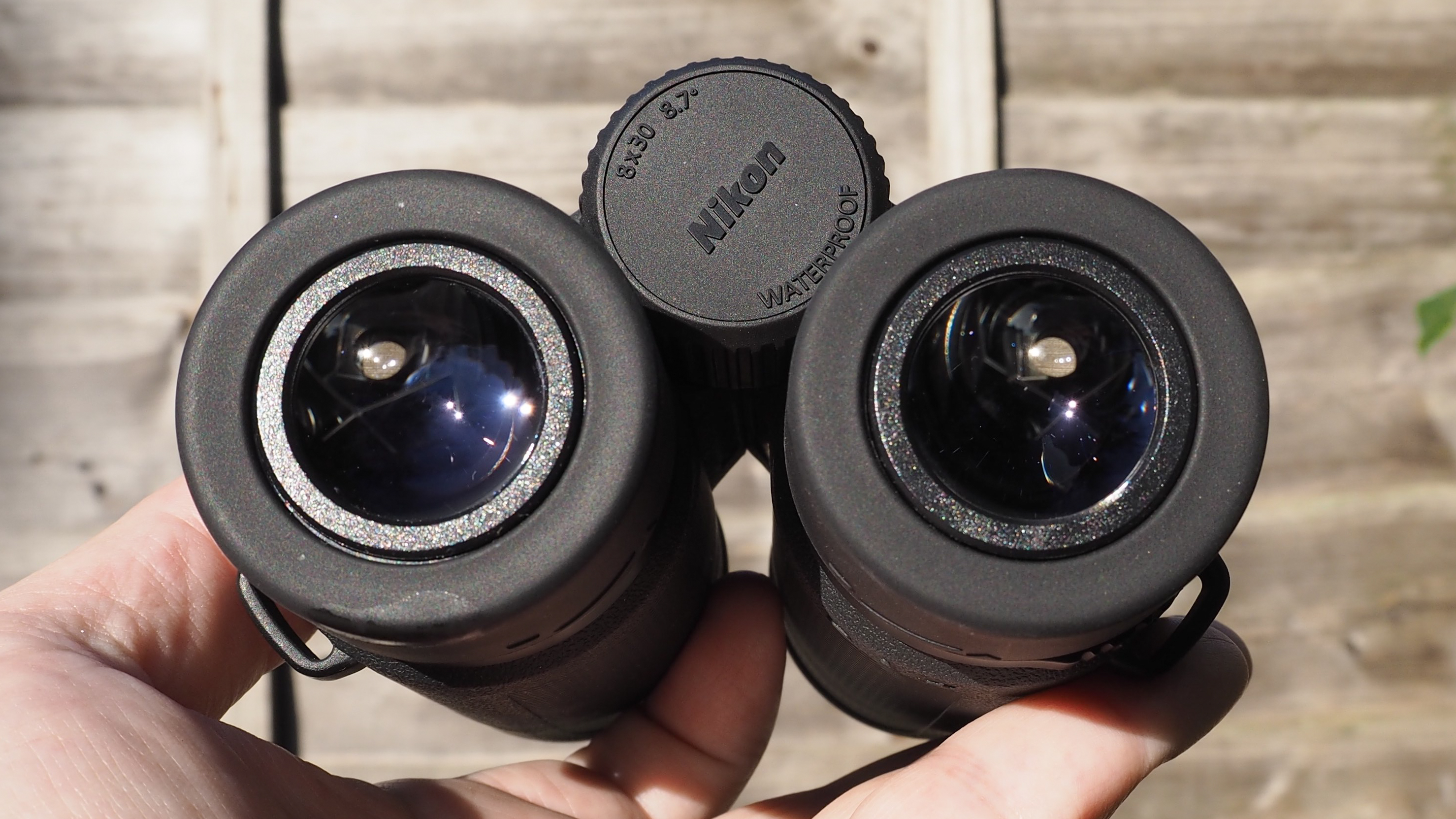
Thes Nikon binoculars feature the obvious benefit of a bigger than average for its size 30mm objective lens, wedded to a standard 8x magnification. Though our review sample at first appeared to be black under most lighting conditions, when examined closely it’s actually a very dark forest green. The body is constructed from fibreglass-reinforced polycarbonate resin and certainly feels reassuringly robust when gripped. Its dark green rubberized exterior coating further prevents slippage and provides a degree of shock-proofing with it.
Like the rest of this particular range, the 8x30 model is waterproof to a depth of 3.3ft, though this is more about allowing for it to be used in the rain, rather than dunked in a pond, as its maker’s stipulation is that it’s not intended for underwater use. Confirming that this model is suitable for use in the great outdoors and moving between warm and wet environments, it’s fog-proofed to boot. So we’re getting all the ‘grown up’ features we’d expect or hope for here, at a near pocket-money price, which augurs well from the off.
Build and handling
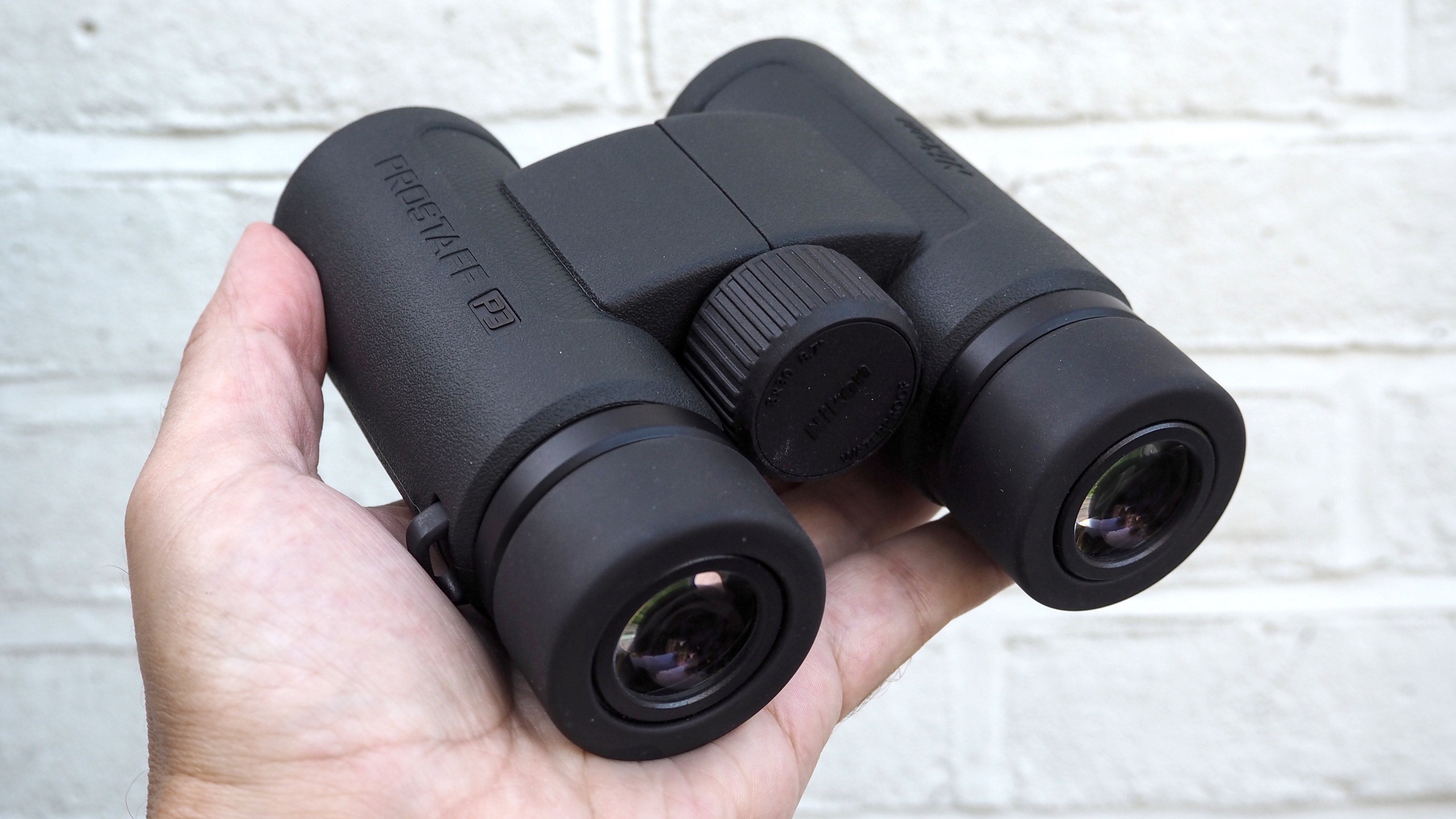
As noted, the Nikon Prostaff P3 8x30 binocular features a slightly spongy shock-resistant, durable exterior that feels tactile to the touch, plus weather-resistant features that better the specification provided by even small, pocket alternatives, such as the teeny Nikon Aculon T02 10x21 binocular we’ve reviewed elsewhere. We wouldn’t expect this example to fall from our grip, even if operated with wet fingers.
As is the case from Nikon and most competitors, multi-layered lens coatings maximize light transmission on this particular model while a slightly stiff dioptre ring allows for fine-tuning of focus, beyond use of the large and obvious centrally mounted focus ring that sits between its eyepieces.
There are only minor aspects here that betray a budget price, such as the carry bag and protective front and rear caps that are surely candidates for getting mislaid – and we can imagine the slip-on lens caps and eyepiece protectors getting lost over time too. But this is hardly a deal breaker when everything else impresses for this price.
Versus
There are lots of alternatives with very similar specifications to the Nikon Prostaff P3 8x30 binocular, even though we feel this example holds up really well as a standalone product. As well as the alternative Nikon models highlighted in our introduction to this piece, competitors’ devices include the Celestron Trailseeker 8x42, which is also a decent-value compact midrange binocular, although it has slight issues with color fringing when compared to this Nikon if we’re being picky. For better image quality and if we’re unafraid of blowing the budget entirely, then another alternative is the Leica Trinovid HD 8x42. This is the one to go for if we want the one binocular to last us a lifetime, and because of that we can justify the extra outlay.
Performance
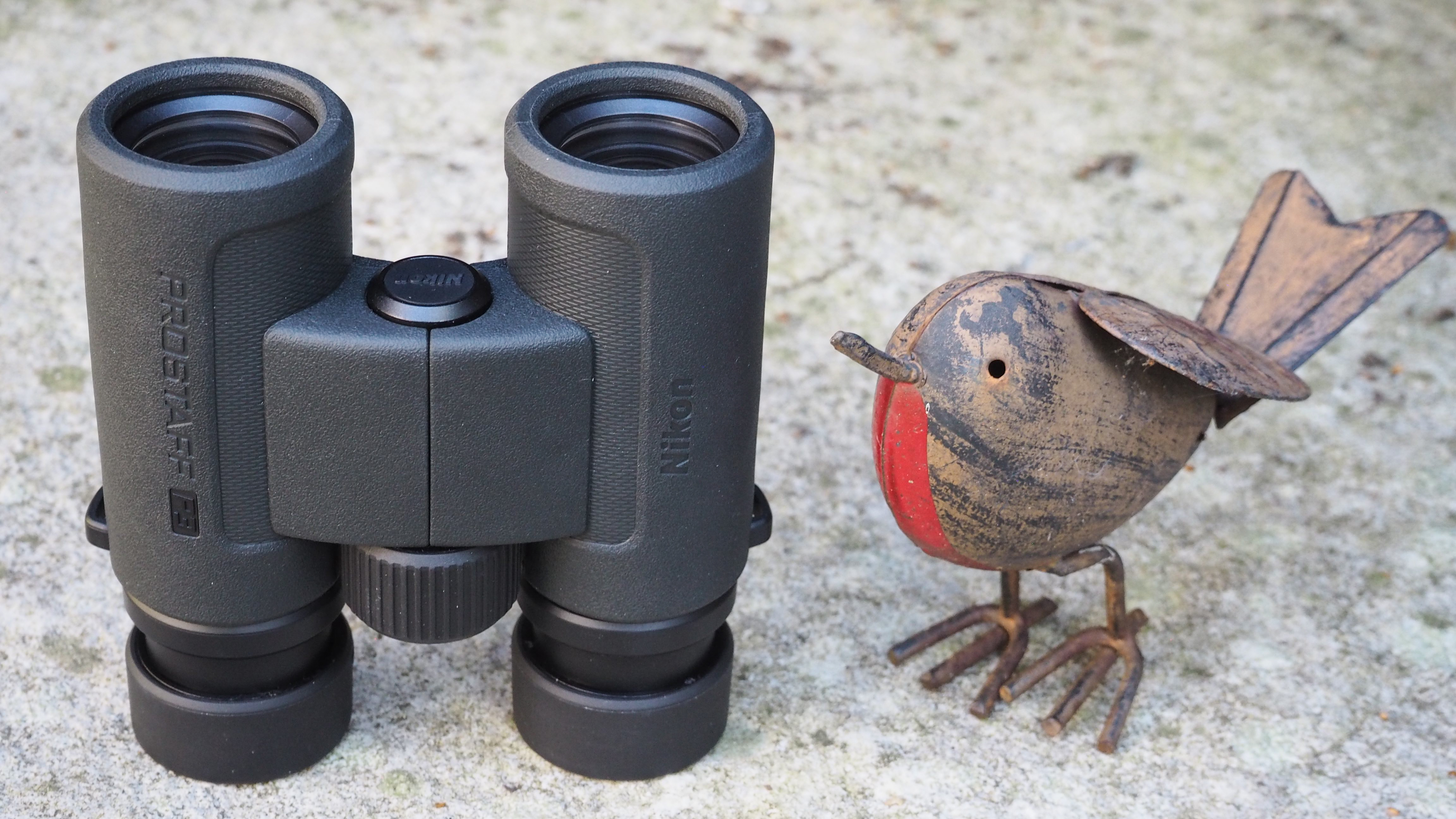
We enjoyed using the Nikon Prostaff P3 8x30 and the way they look, feel and handle from the off. There’s pleasingly little here that screams budget and indeed our impression when we first tried them out was that results were far better than expected.
Maybe that has something to do with Nikon’s claim that a highly reflective silver alloy coating has been applied to the mirror surfaces of the prisms used in its build, so that more of the visible color spectrum reaches our eyes.
Whatever, the view we got was sharp and clear at a distance, which is just what we want from a binocular. Unlike a couple of Nikon’s own alternative binos, we were using alongside this one, which by contrast had smaller 21mm objective lenses, the Prostaff P3 8x30’s 30mm objective lens seemed to noticeably offer an improved performance in lower light levels, chiefly as dusk was approaching. In short, we feel this is a decent all-rounder for those who don’t want to spend a fortune, but still want to receive a value for money and robust performance for their investment.
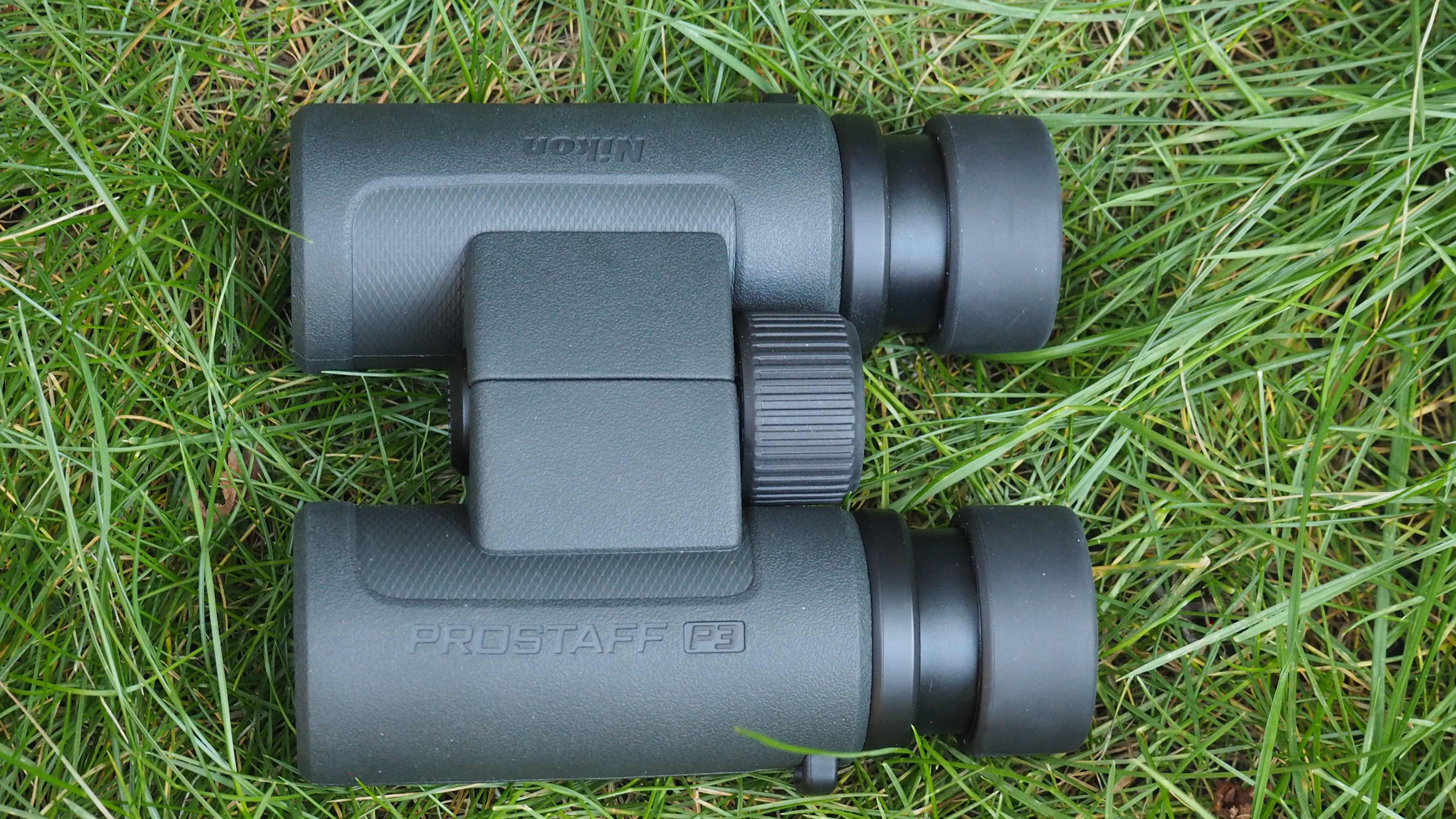
Verdict
Nikon promises that the Prostaff P3 8x30 binocular is all about offering maximum performance at a very fair price, and indeed with a robust, high-quality feel it looks and handles closer to a premium model than its mid-range status would imply. If you’re looking for an all-in-one option that is suitable for use all day, every day, come rain or shine, then we reckon this example should warrant your further investigation and, ultimately, your purchase.
- The best binoculars
- The best binocular tripod adapters
- Best binocular harness
- The best night vision goggles & binoculars
- Best compact binoculars
- Best binoculars with cameras
- Best 8x42 binoculars
- Best budget binoculars for under $100
- The best thermal imaging binoculars
- The best image stabilized binoculars







